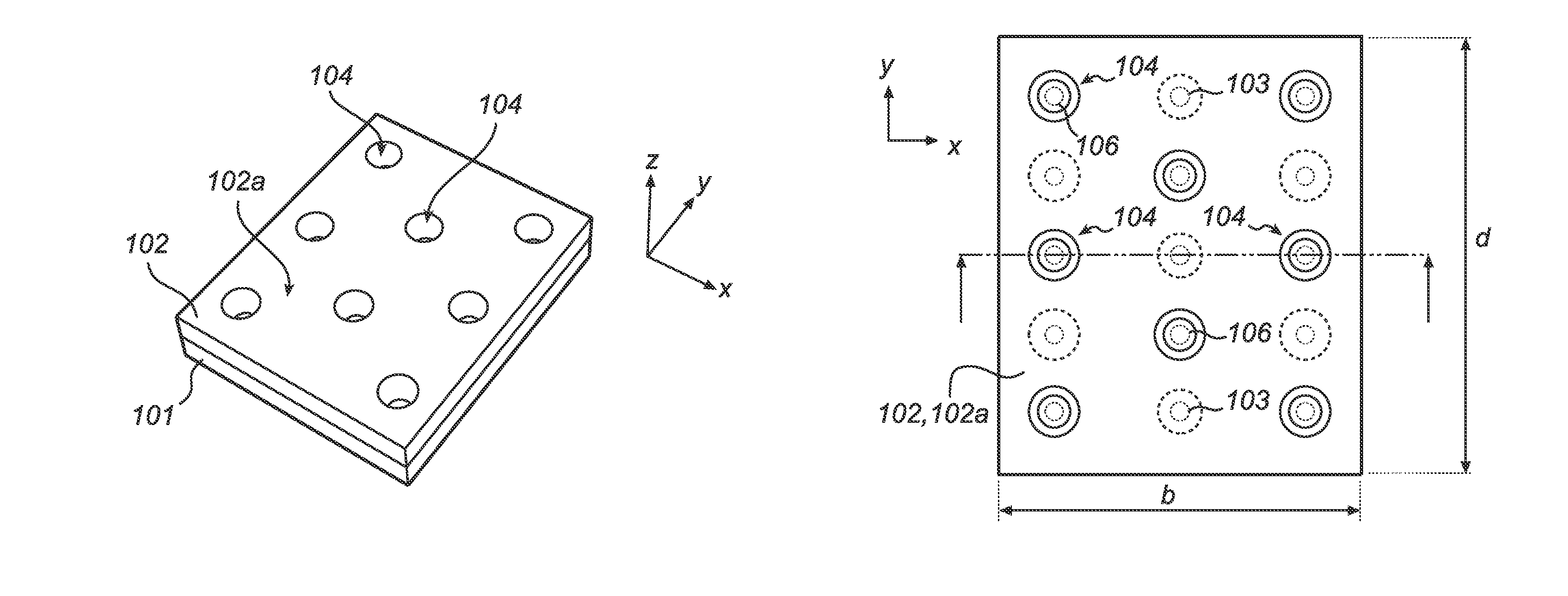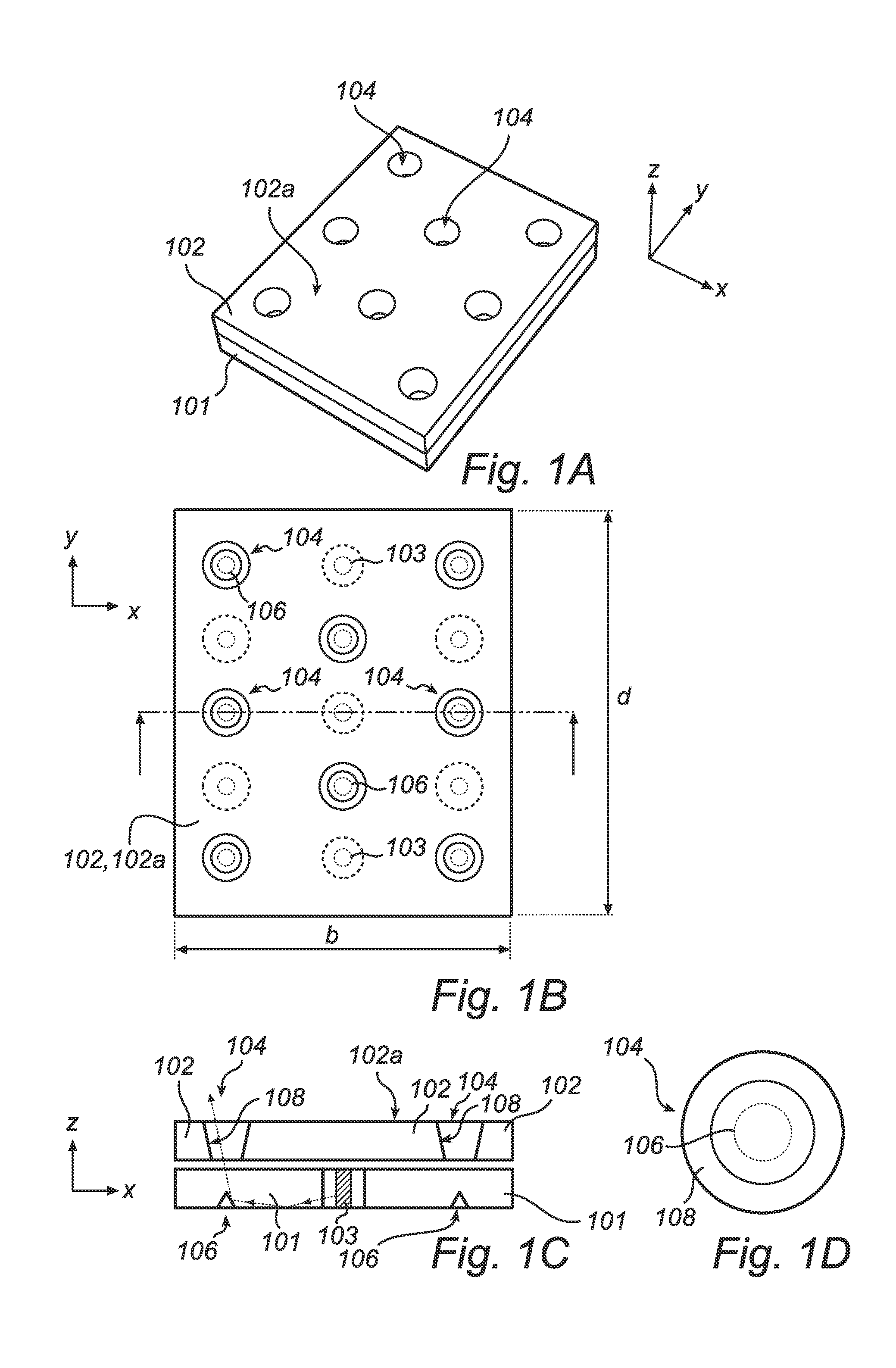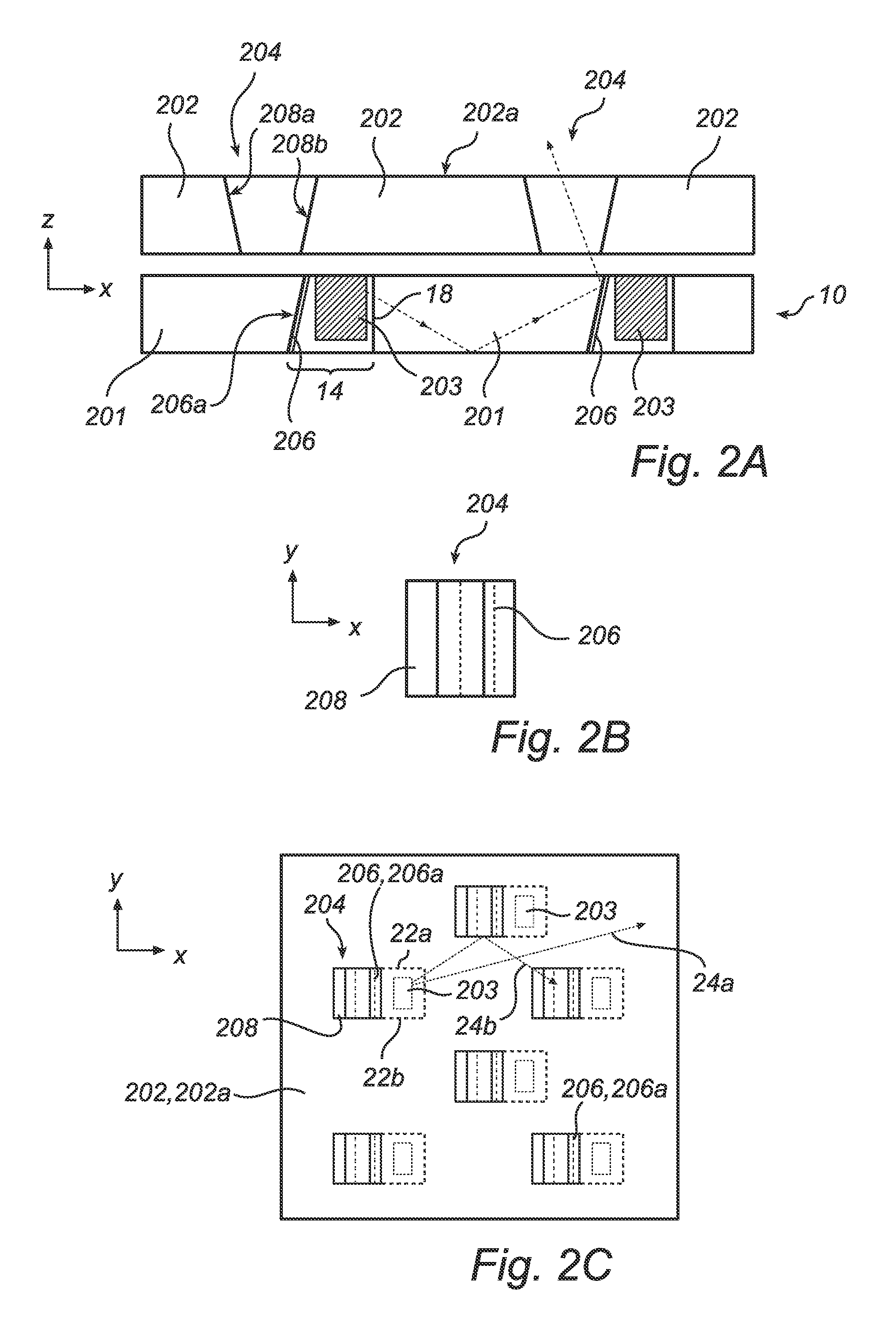Luminaire arrangement with cover layer
a technology of luminaires and covers, applied in the direction of lighting support devices, instruments, lighting and heating apparatus, etc., can solve the problems of heat dissipation, particular requirements, and drawbacks of existing led luminaires, and achieve the effects of facilitating luminaire arrangement to harmonize with the surroundings, good light efficiency, and enhanced transparency
- Summary
- Abstract
- Description
- Claims
- Application Information
AI Technical Summary
Benefits of technology
Problems solved by technology
Method used
Image
Examples
first embodiment
[0053]FIG. 1a is a schematic view in perspective of a luminaire arrangement with cover layer according to a A cover layer 102 is arranged in front of and attached to a light guide 101. FIG. 1b is a schematic top view of the luminaire arrangement of FIG. 1a, showing the surface 102a of the cover layer 102. Underlying out coupling means 106 and light sources 103 are outlined with dotted lines.
[0054]There are multiple light sources 103 arranged at the light guide for emitting light therein. The light is spread and mixed in the light guide and then directed out from the light guide in a target direction z by out coupling means 106 arranged at the light guide. The material of the light guide is typically PMMA or PC. The cover layer 102 is light obstructing but is provided with areas 104 that are transparent to the emitted light and arranged so that the light being directed out from the light guide via the outcoupling means pass via these areas. The cover layer has a major surface 102a t...
second embodiment
[0060]FIG. 2a is a schematic side view of a luminaire arrangement with a cover layer 202 and is showing a cross section of a light guide 201 and the cover layer 202. An exemplary light ray-trace is shown by a dotted arrow.
[0061]FIG. 2b is a schematic top view at a transparent area 204 in the cover layer 202 of the luminaire arrangement of FIG. 2a, and FIG. 2c is a top view of the luminaire arrangement of FIG. 2a. The transparent area 204 is here viewed from the target direction z and has a rectangular cross-section. The underlying out coupling means 206, in this embodiment a tilted mirror, is outlined with dotted lines.
[0062]Also in this embodiment a transparent area 204 of the cover layer comprises a funnel shape aperture. The aperture has two opposite inner surfaces 208a, 208b and is located so that light redirected by the out coupling means is allowed to pass through the aperture. Light in the light guide, which has been emitted by light sources 203, is reflected in a mirror fac...
third embodiment
[0078]FIG. 4 is a schematic side view of a luminaire arrangement with a cover layer where a transparent area 404 in a cover layer 402 is adapted to the degree of collimation (alternatively non-collimation) of light from the light guide 401. In this example light in a luminous flux being provided and directed in a target direction z by out coupling means 406 do not deviate more than a angle θ from the target direction, or at least a major part of the light in the luminous flux deviate less than this angle. The angle θ can thus be seen as a collimation angle representing the degree of collimation of the luminous flux. When the light in a flat light guide is not collimated, light guiding conditions (total internal reflection, TIR) specify that any beam angle inside the light guide should be within 45° with respect to the plane (xy) of the light guide. When this is the case and the out coupling means comprise a reflective surface, such as a mirror-like surface, tilted about 45° with re...
PUM
 Login to View More
Login to View More Abstract
Description
Claims
Application Information
 Login to View More
Login to View More - R&D
- Intellectual Property
- Life Sciences
- Materials
- Tech Scout
- Unparalleled Data Quality
- Higher Quality Content
- 60% Fewer Hallucinations
Browse by: Latest US Patents, China's latest patents, Technical Efficacy Thesaurus, Application Domain, Technology Topic, Popular Technical Reports.
© 2025 PatSnap. All rights reserved.Legal|Privacy policy|Modern Slavery Act Transparency Statement|Sitemap|About US| Contact US: help@patsnap.com



